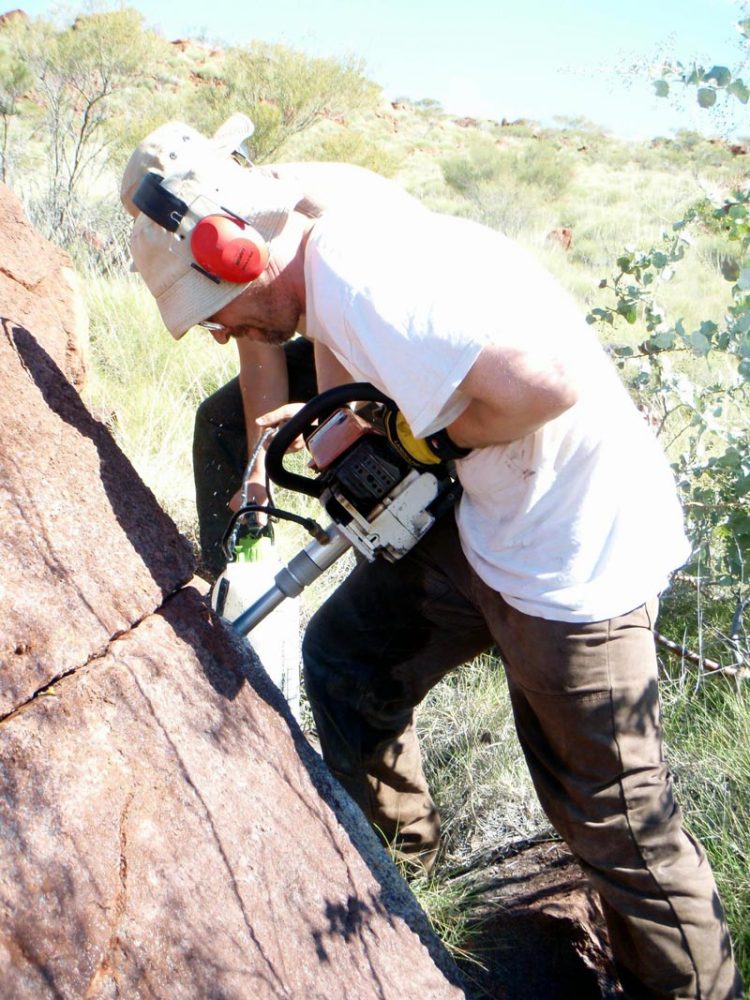Clues to the Earth's ancient core

Aleksey Smirnov drills into an outcrop in Australia's Widgiemooltha dike swarm. Credit: Aleksey Smirnov, Michigan Tech
Now, a geophysicist at Michigan Technological University has unlocked clues trapped in the magnetic signatures of mineral grains in those rocks.
These clues will help clear up the murky history of the Earth's early core.
The journal Earth and Planetary Science Letters published a paper on the subject earlier this year. Aleksey Smirnov, an associate professor of geophysics and adjunct associate professor of physics at Michigan Tech, led the study.
The work took him Down Under, where he drilled into rock outcrops in Australia's Widgiemooltha dike swarm that are more than two billion years old. Studying rocks this old–and extracting data from them–is tricky but helps unravel the core's mysteries.
However, Smirnov's findings created their own mystery: the magnetic readings were significantly larger than anticipated. This could have implications for early life on earth.
###
To learn more about Smirnov's research, read the full story about his work here: http://www.
Media Contact
All latest news from the category: Earth Sciences
Earth Sciences (also referred to as Geosciences), which deals with basic issues surrounding our planet, plays a vital role in the area of energy and raw materials supply.
Earth Sciences comprises subjects such as geology, geography, geological informatics, paleontology, mineralogy, petrography, crystallography, geophysics, geodesy, glaciology, cartography, photogrammetry, meteorology and seismology, early-warning systems, earthquake research and polar research.
Newest articles

Combatting disruptive ‘noise’ in quantum communication
In a significant milestone for quantum communication technology, an experiment has demonstrated how networks can be leveraged to combat disruptive ‘noise’ in quantum communications. The international effort led by researchers…

Stretchable quantum dot display
Intrinsically stretchable quantum dot-based light-emitting diodes achieved record-breaking performance. A team of South Korean scientists led by Professor KIM Dae-Hyeong of the Center for Nanoparticle Research within the Institute for…

Internet can achieve quantum speed with light saved as sound
Researchers at the University of Copenhagen’s Niels Bohr Institute have developed a new way to create quantum memory: A small drum can store data sent with light in its sonic…




















